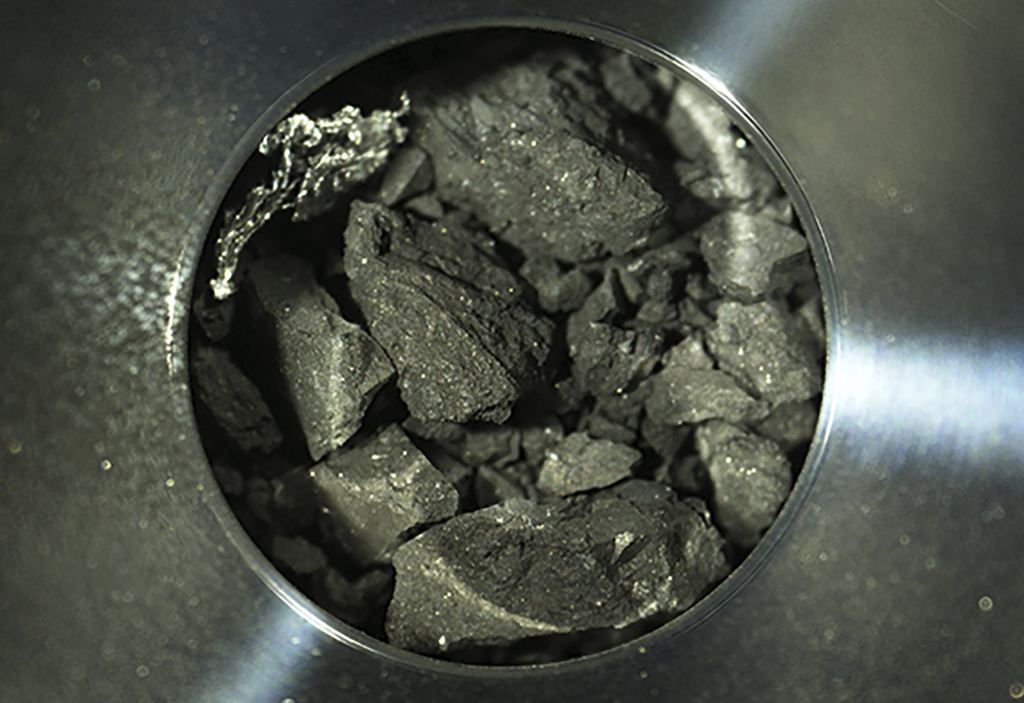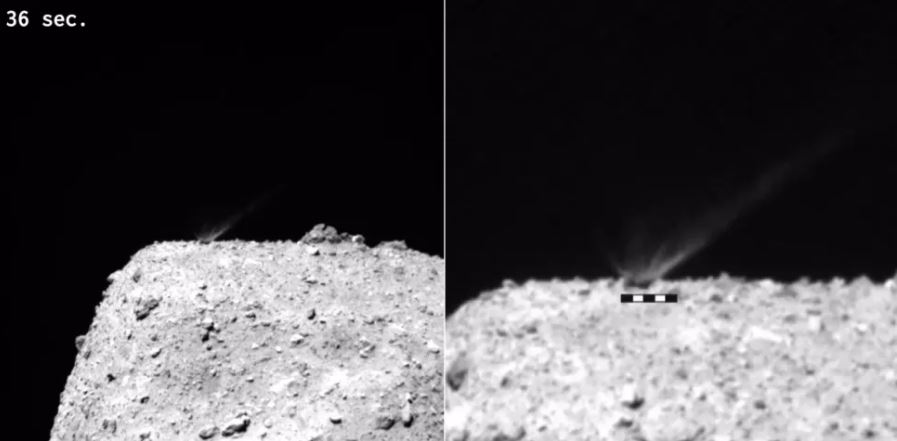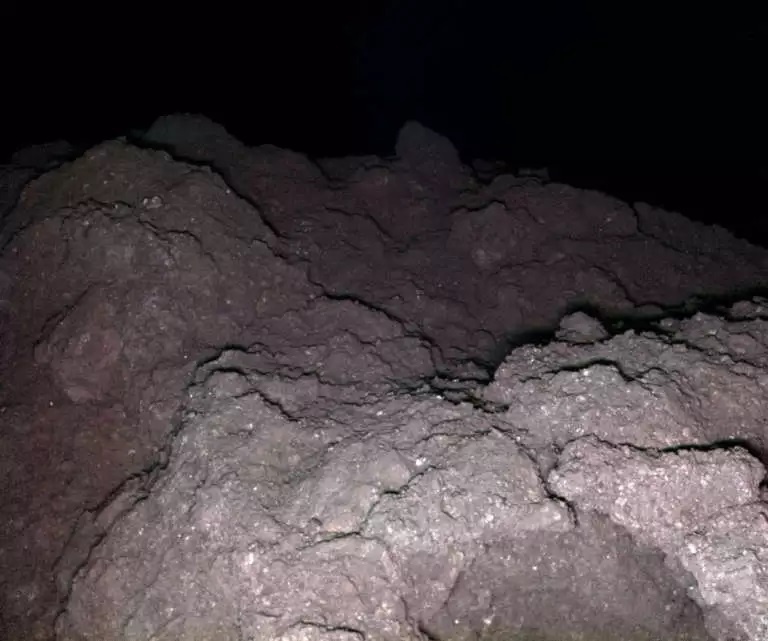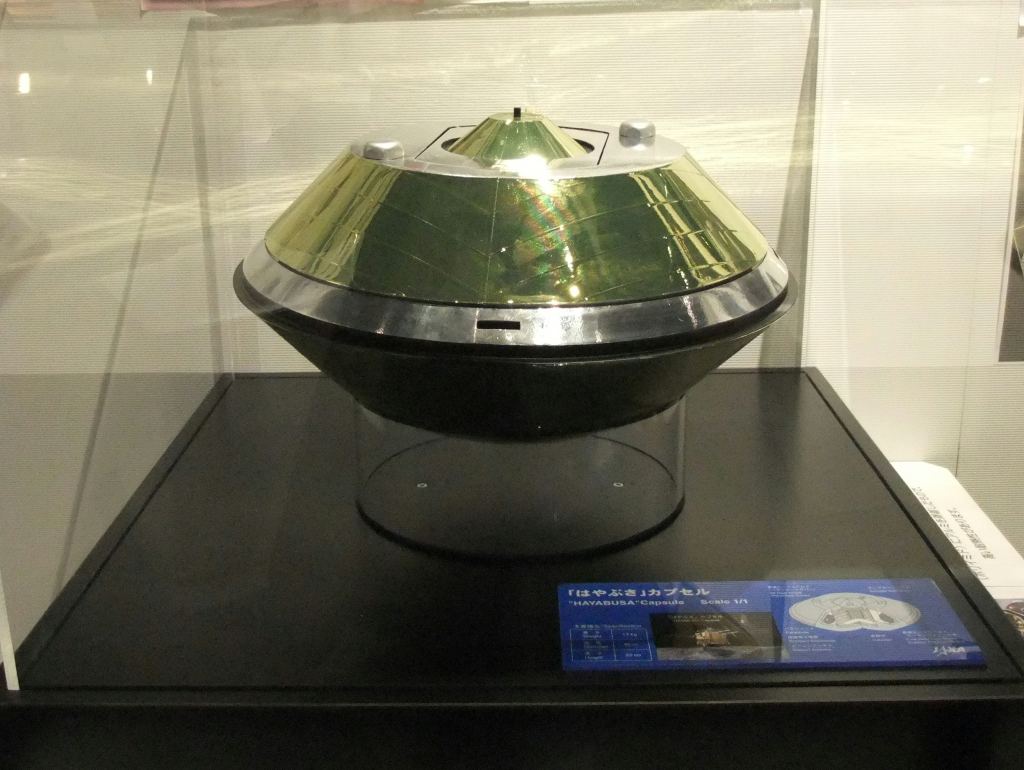A fireball hurtled across the sky on December 5th – the sample return capsule from the Hayabusa2 asteroid mission by JAXA (Japan Aerospace Exploration Agency). The capsule landed in Woomera, a remote location in the Australian Outback. Earlier this month, the capsule’s sample containers revealed fine grain topsoil from asteroid 162173 Ryugu. A second sample container has since been opened that contains chunks up to an entire centimeter in size.

Lighten the Load
These larger fragments are thought to be pieces of bedrock from Ryugu. They were collected during Hayabusa2’s second touchdown in July 2019 to collect subsurface soil. Topsoil was collected on the first touchdown in February of 2019. Hayabusa2 was able to make multiple touchdowns on the surface because Ryugu only experiences microgravity being a relatively small asteroid only 1 kilometer in diameter.
The low gravity allows Hayabusa2 to “hover” just above the asteroid’s surface and use a sample “horn” to collect soil. On the first touchdown, the probe fired a small 5g tantalum projectile into the surface at 300 m/s. In the microgravity, the ejected material could travel upward along the probe’s horn funneled into the sample collector. A second scheduled topsoil collection was scrubbed. A suitable landing site was difficult to locate because of Ryugu’s uneven, rocky terrain.

CC BY 4.0 JAXA
The subsurface soil collection in July 2019 was achieved by literally bombing the surface of Ryugu with the equivalent of an armour piercing anti-tank projectile. Hayabusa2 deployed a free-flying gun 500m from Ryugu’s surface while itself moving to a safe location to avoid being hit by debris. Hayabusa2 also deployed a detachable camera which remained to watch the impact while Hayabusa2 was out of harm’s way. The gun then detonated a explosive, launching a 2.5kg copper round at the surface.

The resulting impact created a 10m wide crater exposing subsurface soil later collected by the probe. The large 1cm chunks in the container could be fragments of bedrock shattered by the impact that then broke into smaller pieces as they entered the collection compartment. The material collected from Ryugu also includes gas samples, likely released from the soils, which marks the first time that extraterrestrial gas has ever been collected from space.
“The sample of the asteroid extraterrestrial material that we dreamed about is now in our hands”
Yuichi Tsuda -Hyabusa2 Project Manager
A Blast From the Past
Samples of soil and gases have yielded more material than the Hayabusa2 team had anticipated which is great for follow-up research. The team will analyze the soil to learn more about the asteroid itself and gain insights to the early history of our Solar System. Asteroids like Ryugu are floating time capsules orbiting our Sun with a record of the Solar System’s past. Blasting Ryugu revealed soils that are shielded from solar radiation and the surrounding Solar System environment – essentially a preserved state from the asteroid’s formation billions of years ago. Ryugu was chosen as a target because it is a “C-Type” or carbonaceous asteroid – primordial stone from the early Solar System.
These samples will be analyzed for organic material which can help us understand how organic material was spread through the young Solar System and if it shares any relationship to life on Earth. So while we’re learning about the history of the Solar System, Ryugu may yield secrets of our own past as well.
We’ve also learned more about Ryugu the asteroid itself. In addition to soil sample collection, Hayabusa2 landed 4 different rovers on the surface. Rather than rolling around on wheels, these “hopped” using spinning masses to torque themselves off the surface in low gravity.

The rovers were able to capture stunning pictures and video from the asteroids surface. Ryugu was determined to be a “rubble pile” object in the Solar System. Rather than a solid mass, Ryugu is 50% empty space – a lumped collection of rocks loosely held together by gravity. This could indicate that, at some time in the past, Ryugu was shattered by a cosmic impact and then coalesced under its own gravity as a pile of rocky fragments.
Voyage Home
After retrieving the samples, Hayabusa2 completed a 13 month return journey to Earth. At a distance of 220,000km the probe released a capsule containing the gas and soil samples which entered Earth’s atmosphere on Dec 5th travelling at 12km/s creating a long-tailed fireball. Both the outbound journey to Ryugu and the return journey logged a total of 5.24 BILLION km. The solar system is really, really big. The containers were located by several retrieval teams in the Australian Outback.
streaking through Earth’s atmosphere – JAXA

Back into the Expanse
This isn’t the end of Hayabusa2’s mission. Having completed its primary mission, the probe is now headed to rendezvous with another asteroid, 1998KY26 scheduled for July 2031. 1998KY26 is much smaller than Ryugu at only 30m in diameter and is considered a rapidly rotating micro-asteroid making one rotation every 10.7 minutes. Hayabusa2’s rendezvous will mark the first visit to one these rapidly rotating objects as well as the smallest object in the Solar System to be visited by a spacecraft. JAXA isn’t finished sampling rocky worlds either. A mission is planned for the mid 2020’s to sample the Martian moon Phobos.
This era of robotic exploration of the Solar System is astonishing. Think of all that we just accomplished with one 600Kg space probe. It fits four rovers, a deployable space gun, detachable camera, and its host of senor equipment all in one probe. That and it can do multiple journeys to and from Earth as it explores space. We’re gearing up for more human exploration of the Solar System but, in the meantime, robots are doing the heavy lifting (or microgravity lifting). I’m already counting down to Perseverance’s’ landing on Mars in just a month and a half!
Follow Matthew’s Spacey Thoughts on Twitter
More to Explore:
Even the Outside of Hayabusa 2’s Sample Capsule has Asteroid Debris on it – Universe Today
Hayabusa2 Fires an Anti-Tank Warhead at Asteroid Ryugu – Universe Today
Asteroid Ryugu is a “Fragile Rubble Pile” – Universe Today
Japanese spacecraft’s gifts: Asteroid chips like charcoal (phys.org)
Japan’s space agency finds ample soil, gas from asteroid (phys.org)
MMX – Martian Moons eXploration (jaxa.jp)
Hayabusa2’s next next mission: small, rapidly spinning asteroid | The Japan Times

